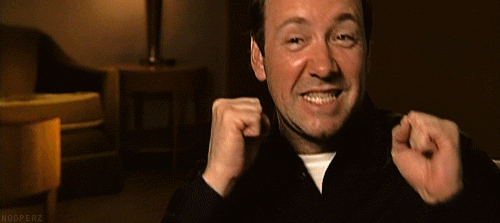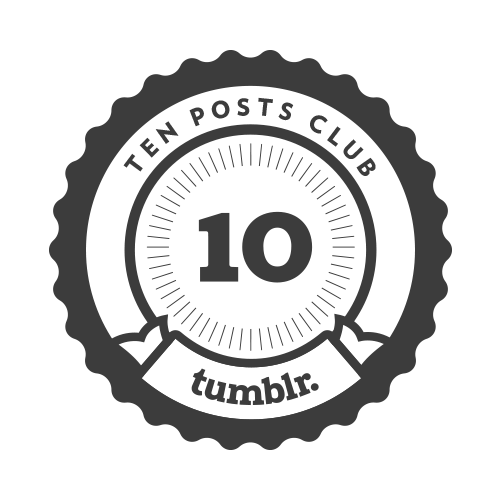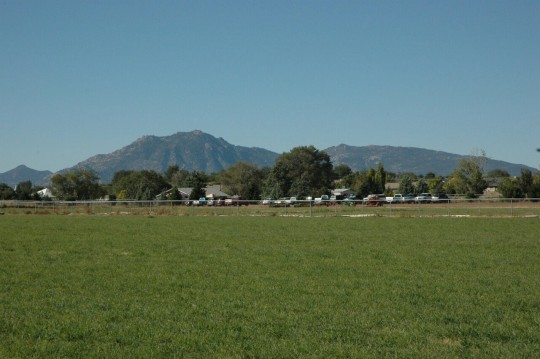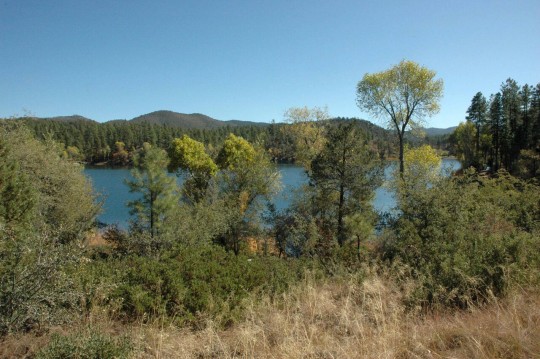Don't wanna be here? Send us removal request.
Text
Future of Social Media and IoT at the Library
Social media and the Internet of Things is coming to a library near you.
There are many ways in which social media and specifically the Internet of Things, can help at the library. Some of the things that I personally would love to see first are:
-- Tracking items within the library. This would allow automatically checking items in when they first enter the library and automatically checking them out as they leave the library as well as being able to find an item that has been miss-shelved. No more having patrons insist they turned in an item already but the system saying they still have it checked out. And eventually having the patrons be able to use their phones or devices to lead them to the item they are looking for (sort of like a gps turn-by-turn but for the library)
-- Using data to help organize the library more efficiently. If we know that certain items always seem to be checked out together, we can more efficiently place the different items so they can be found quicker with less wandering patrons. (for example if biography books always seem to be checked out with mystery novels)
-- Due date reminders and other reminders for library events (or community events) could be pushed out to phones and devices for patrons who have elected to have them sent out. This would be quicker and more efficient that sending out notices in the mail or even by email.
There are so many ways that IoT could contribute to making the library easier for the patron to use (and for the librarian as well). The more of the basic tasks that we can automate, the more time librarians can spend helping patrons with the things that technology cannot yet.
However, there are many concerns and decisions to be made before these things can come to pass. Specifically, people need to decide where concerns for privacy of data and security of data are in relation to their desire for the conveniences that technology can offer. Also how much do we trust these devices and their makers? Do we trust them with controlling our environment yet? Or do we prefer to maintain control instead of giving control over to the technology? These devices offer convenience, increased efficiency and less wasted time and resources, but is that enough?
The technologies will first appear in industries where the customer may never know that they are helping to make the item that ends up in the customer’s hands. Then they will move to commercial places and businesses, where people will need to learn how to use them in their work and shopping or be left behind. Then and only then will they be ready to be in homes on a large basis. Libraries will be part of the commercial places where these technologies show up. We need to keep on top of learning them and how to use them to advantage in our libraries. They can do alot of good and help alot of patrons and librarians. But only if we learn to use them to their best advantage within our environment.
4 notes
·
View notes
Text
The best/worst things to do on social media
The best things to do:
Listen first - Before you do anything, listen, watch and explore the social media site(s) you are interested in joining. The people you want to reach may not even be a presence on your favorite site. Figure out first, where your audience is and what they are interested in. Then you can make sure that your time is not wasted and that you are posting the right messages to attract the right people.
Have a plan - Anytime you are starting a new project at work, you will be expected to have a plan with goals and a way to measure success. Social media is no different when you are doing it as a library. You don’t want to waste your precious and limited time when you have so much else to do (and your supervisors will not appreciate that either). Establish a schedule and stick to it, have goals that a quantifiable to prove your success.
Interact - Social media is meant to be social. It is not a new advertising route, make sure you are not just talking about your library in the same way as you create fliers or notices on your website. Ask and answer questions and comments, share things of interest from others and start or join interesting conversations already going on.
Optimize for sharing - Make it easy for others to share your content. Don’t forget to place share buttons on your website and postings. Learn how to use hashtags correctly to make you content more findable. Make sure you add links to your other social media accounts on each account. Be easier to find by using the same name, avatar and banners on your accounts. Don’t miss the small things by rushing on to your postings. There is so much already out there, you need to do your best to make your library findable and your content easily shareable. That way the work you do will go farther.
Analyze - Learn how to use analytics and determine how often is right for you to check them. Know what stats are of interest to you and don’t get bogged down with too much data. This should be part of your social media plan as well.
The worst things to do:
Jump first - Getting excited about joining social media or just in hurry and posting stuff without looking around first, makes the poster look more like a spammer than someone who cares about their message/community.
Wherever, Whenever posts - People may follow or like someone just because they see one post that interests them. But, they are not paying attention and truly listening to you until they know they can expect posts on a regular basis. By posting inconsistently, you give the impression that you don’t really care. Sort of like the friend that will call once and then not again until they want something from you.
All Advertising, All the time - No one keeps listening for long to that one person that only talks about themselves and their own problems.
No buttons, no problem - If it is not easy to post something from your site, then the person will move on to the next thing to post and you are the one losing out, all for the lack of a button.
Just keep posting - Analytics are too hard to understand anyways right? Sort of like that statistics class in college that everyone dreads? As long as your followers don’t take a nosedive you’re doing fine.
1 note
·
View note
Text
On how to measure success
Well, at least some ideas on how to measure success in social media for libraries.
In order to tell how successful your social media efforts have been, you first need to make sure you have listed your goals. Different libraries will have different goals based mostly on their audience. For example, a library in a small town vs a library in a big city will have very different expectations both in numbers and in types of interaction they are hoping to encourage.
Every library will have different measurements that they want to follow based on their different goals as well. Some libraries will be most interested in seeing their likes and reposts go up, some will be more interested in increasing their interactions with people online (comments, etc).
There are many different options to track the measurements you are interested in for your library. One option to start with is to use the free analytics that most of the social media sites have on offer, for example facebook and twitter both have their own analytics. Facebook has Facebook Insights and Twitter has Twitter Analytics. Both are good places to start with the basic measurements. They are not customizable like many of the 3rd party services, but then those services can add up fast as well.
The big thing with any analytics, including Facebook Insights and Twitter Analytics are to know what the numbers mean. Always check the help pages to make sure your understanding of what “Post Reach” means is what Facebook is actually calculating.
0 notes
Text
Marketing Social Media in the Library
There are many ways to market your social media accounts and they will continue to grow and change as social media/technology grows and changes.
When first setting up a new social media account, there are a few things to make sure to do to help with marketing. Make sure you use an account name (user name) that is the same as any other social media accounts you use (and it is recognizable as your library). And also try to make any pictures and backgrounds consistent across your accounts. Make sure you list links to other social media accounts on each new social media as well as prominently on your library website. Make sure your staff and volunteers all know about your social media accounts and can connect to them with their own accounts if they would like to (also good so they can answer any patron questions about your social media presence).
In the library, you can market your social media by posting information near the patron computers, have handouts (maybe as bookmarks) with library information and your social media information, and even add the social media info to handouts about programming in the library.
While posting to your social media accounts you can help market them, by making sure you understand and are using tags and hashtags properly, add pictures, animation and video as these draw more interest, make sure you post things other than library related posts that your patrons will find of interest, and consider using contests or polls to increase interaction levels on your social media accounts. If you use contests, consider always adding a way for patrons to participate outside of social media entries (like a “no purchase necessary” option).
When marketing or using your social media always remember to make sure you Know Your Patrons. The more you know your patrons, the more chance you have of getting those patrons to not just “like” you, but to interact with you on your social media accounts. And the more interaction there is on your social media, the more other people will be drawn into the action.
0 notes
Text
Libraries use of big data
Libraries can benefit greatly from using big data. In collecting and using big data however, libraries should always make sure it is used to the benefit of their students/patrons and that the information collected is secure.
I would say there are two types of information here, the patron information required when getting a library card or using the library services, and information that is voluntarily given by the patron (such as posts or comments on a library’s social media accounts). The required patron information has policies in place already to protect it (or should), these policies should be updated regularly as computer systems and networks that can access the patron databases, change with technology changes.
This patron information can be and has been used to pull out statistics of use for the library. For example, how many patrons in distinct age ranges are actively using the library. These statistics can be used to help a social media plan as well, by watching to see if the activity of certain patron groups change during or after a change in the library’s use of social media accounts.
In using either the patron data or other volunteered information for any use, the most important thing to consider is transparency. Most people very often will accept “terms and conditions” but never read them until they have a problem. Because the purpose of libraries is to serve the needs of their patrons/students/faculty, I think it is even more important to be upfront with people about how you might intend to use any information they give you. Especially the new kind of information that they are not used to considering such as entries on social media that relate to the library. People have grown used to the idea of their data being used by companies, we don’t need to constantly put forward about how the info we have gathered will be used, but it should be available for people to easily find and very easy for people to understand. So many companies create “terms and conditions” that are extremely long and wordy and often seem written in legalese that was never meant to be read through let alone understood easily.
The opportunity to be completely transparent in how someone’s data will be used by the library is greatest when it comes to the second type of library patron data. On each social media platform the library is using, a simple entry about data use as part of the library’s bio information would be easy to add. And a simple one or two sentence statement could be added to most places where the library is asking for something from their patrons. For example, a small sentence at the bottom of a paper survey that the library patron is filling out, would be an easy add. Also, making every effort to ask a patron if you want to use something they have posted as a response to the library, even if you have a statement on your bio about it, would help with transparency. It would also help encourage that patron to keep interacting with the library online if the library picks their comments to post out of everyone else’s.
0 notes
Text
Education, Web 2.0 and Social Media
Education at all ages has been influenced by Web 2.0 and social media in many ways. From educators having to deal with students distracted by social media in the classroom, to making decisions about what online information is acceptable as information sources on assignments, social media has certainly introduced many new challenges into the classroom. However, social media has also contributed as well from teachers communicating with others across the country and learning new methods and lesson plans, to working adults being able to take online classes on their own schedule. There are definitely some areas of education that seem to be able to benefit from social media and Web 2.0 advances more than others. It seems that much of the time, the good or bad contributions that social media brings to the classroom are determined by the comfort level with technology of the teachers and students. For a teacher and students that are all comfortable and knowledgeable about social media and technology in general, they can contribute greatly to the learning experience. For a teacher that is not comfortable with social media, social media is often seen as something to keep out of the classroom instead of finding ways to use the technology to their advantage. For students that are not comfortable with technology but expected to use it in class, it becomes a stumbling block and an extra world to learn before the student can even start to learn the classroom material itself. Some of the things that social media can add to the learning experience are online interactions with people who are in very different places and have very different life experiences to share and learn from, students that are able to collaborate on projects while working with different schedules, and easily sharing a finished school project with a world of interested people instead of that project being presented to a small classroom and then never seen again. Like with every technology, there is always a learning curve that each person must get past to reach many of the benefits. And there always seems to be a new technology right around the bend. Education along with many other industries must keep up with those technologies if they want to see the benefits and not just the disadvantages of each new technology. Social media and Web 2.0 are two technologies that are definitely best learned and used and both have great uses within education. As they both develop and grow, I’m sure we will find many new ways that they can help contribute to learning in and outside of the classroom (physical or digital).
3 notes
·
View notes
Text
Libraries seem to use social media in various ways. I would group them into promote/notify, communicate and help posts. By that I mean, promote/notify is posting about events, updates like new books, library info like hours and holidays. These are all one way posts. They don't invite responses or enourage two way communication between the library and others. However, they are also quick to create and post and don't require time for alot of follow ups. Communicate posts are any posts that invite a response or respond to someone else's post. Asking questions like "what's your favorite book?" or "how can we improve our library?", contests that people can enter, or any way to encourage active participation. That includes responding to other people's posts whether answering posted questions or commenting on posts. These are opportunities social media really ads to an online presence (as opposed to just a website). But they also take alot more time to monitor online at all different times of the day to watch for the opportunities to respond to questions and posts and alot more thought into coming up with interactive posts that your audience is interested in. Help posts are similar to the promote/notify posts in that they are mostly one way communication. These would be posts like how to download an ebook to your ereader or even recommemdation lists (if you like x book, try these books...). These types of posts existed before social media, but social media offers different ways to interact with them. Youtube videos and infographics posters on pinterest or just being able to post links in tweets to make a helpful blog post easier to retweet about are all ways social media would help. Plus an easy way for readers to comment on the help post and ask questions to clarify something they don't quite understand are also advantages. There are definitely advantages to using social media in a library. However, it seems to be best to have a clear idea of both the amount of time you have to devote to it and a clear idea of just what your audience is interested in before you start.
0 notes
Text
SOMEONE MISSHELVES A BOOK RIGHT IN FRONT OF ME
781 notes
·
View notes
Text
For personal use, I have used Pinterest, Twitter, Youtube, GDocs, GDrive, Gmail, Craigslist(does that count?). For professional use, I have used LinkedIn, Youtube for reasearch and Gmail/GDrive.
Most recently, when preparing for the interview for my current job (that I got, yeah!), I used LinkedIn to look up the people at the library that I might encounter in an interview and Youtube to research and learn about some of the terms in the job listing that I didn’t know about.
Personally, I spend most of my time on Pinterest repinning (”curating” sounds better:) onto lots of boards that cover my varied interests. On Twitter, I spend most of my time retweeting things too. I don’t have alot of family on social media to keep up with and am not really a “social” person so haven’t used that side of things.
Working at a rural public library, I am actually finding a greater need for me to have a good understanding of a wide variety of social media rather than to create content on those social media sites to promote our library. I am the “computer tech” person at the library, so have spent time sitting at one of our computers with a patron helping them to post/respond to craigslist ads, solve problems with FB posts, and figure out problems with Youtube videos. Alot of our patrons have social media accounts, but come to the library to use those accounts as they don’t have internet service at their homes, so any problems or questions they rely on us/me to answer.
As far as if there is a difference between personal or professional use of social media, I think there was at one time, but it is getting more and more mixed. When prospective employers feel free to look up applicants online and consider any social media entries they see as reflective of how that person will turn out as an employee, I think that more and more people need to be aware that anything in the public eye can directly impact their professional life, not just their personal life. Then again, I think the way people look at their “professional” life is changing too. It is becoming more and more common to "market” yourself in an interview not just provide your work experience and skills to get the job. A “career” is not a job at one company or even one field that a worker will keep until they retire. Your “career” is a procession of jobs during which you are expected to continuously position/market yourself to be prepared for the next opportunity to progress that career. Is the change in perception causing the shifts in social media? Or is social media changing the perception of a “professional life”? Or are they developing together? I don’t think there is a clear answer, at least not yet.
4 notes
·
View notes
Text
I look forward to this day in our library.
Hopefully soon....
WHEN WE FINALLY WEEDED ALL VHS TAPES

Submitted by Heather
273 notes
·
View notes
Text
Intro
Hi! My name is Stacey. I am originally from SoCal, but moved to Arizona following family. I now live in Chino Valley, about an hour north of Phoenix. We are high enough to not get Phoenix’s triple digits but low enough to not get as much snow as Flagstaff. We get snow a couple times each winter and it lasts long enough to admire without becoming a nuisance.
I am just starting back in school after quite a few years. I seem to be doing things a bit backwards since I got my job as a cataloger first and am now looking to go back to school to get my MLIS. But whatever works, right? Our library is small enough that I get to wear many hats including cataloger, collection development, purchaser, tech support for our patron computers, web design and occassional circ desk. But we are also big enough to never be bored! We have a great group of people including our very large friends group that helps my job enormously by going through all of our donations, and also running our book sale section and selling books on Amazon for us.
My plans for summer include work, helping with our summer reading programs and this class. I spend my free time with my two papillons, in my flower garden or reading.
3 notes
·
View notes




